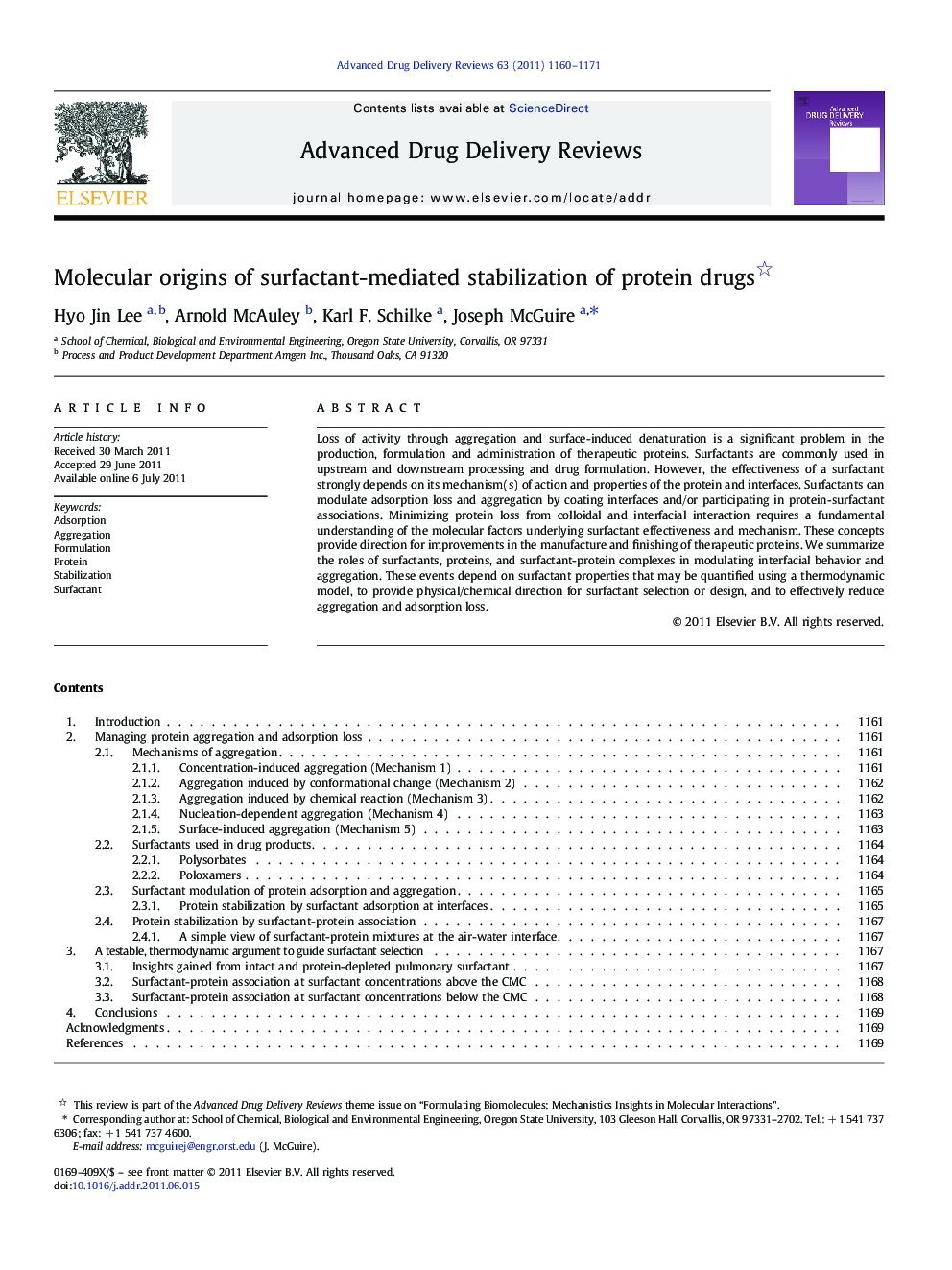| Article ID | Journal | Published Year | Pages | File Type |
|---|---|---|---|---|
| 2071267 | Advanced Drug Delivery Reviews | 2011 | 12 Pages |
Loss of activity through aggregation and surface-induced denaturation is a significant problem in the production, formulation and administration of therapeutic proteins. Surfactants are commonly used in upstream and downstream processing and drug formulation. However, the effectiveness of a surfactant strongly depends on its mechanism(s) of action and properties of the protein and interfaces. Surfactants can modulate adsorption loss and aggregation by coating interfaces and/or participating in protein-surfactant associations. Minimizing protein loss from colloidal and interfacial interaction requires a fundamental understanding of the molecular factors underlying surfactant effectiveness and mechanism. These concepts provide direction for improvements in the manufacture and finishing of therapeutic proteins. We summarize the roles of surfactants, proteins, and surfactant-protein complexes in modulating interfacial behavior and aggregation. These events depend on surfactant properties that may be quantified using a thermodynamic model, to provide physical/chemical direction for surfactant selection or design, and to effectively reduce aggregation and adsorption loss.
Graphical abstractFigure optionsDownload full-size imageDownload high-quality image (151 K)Download as PowerPoint slide
